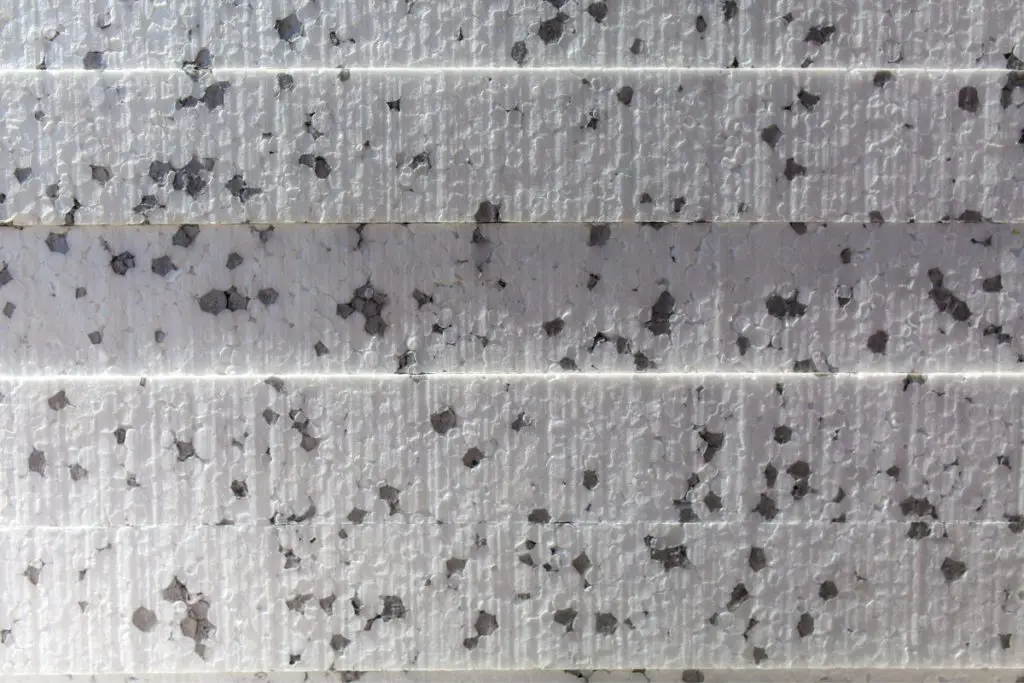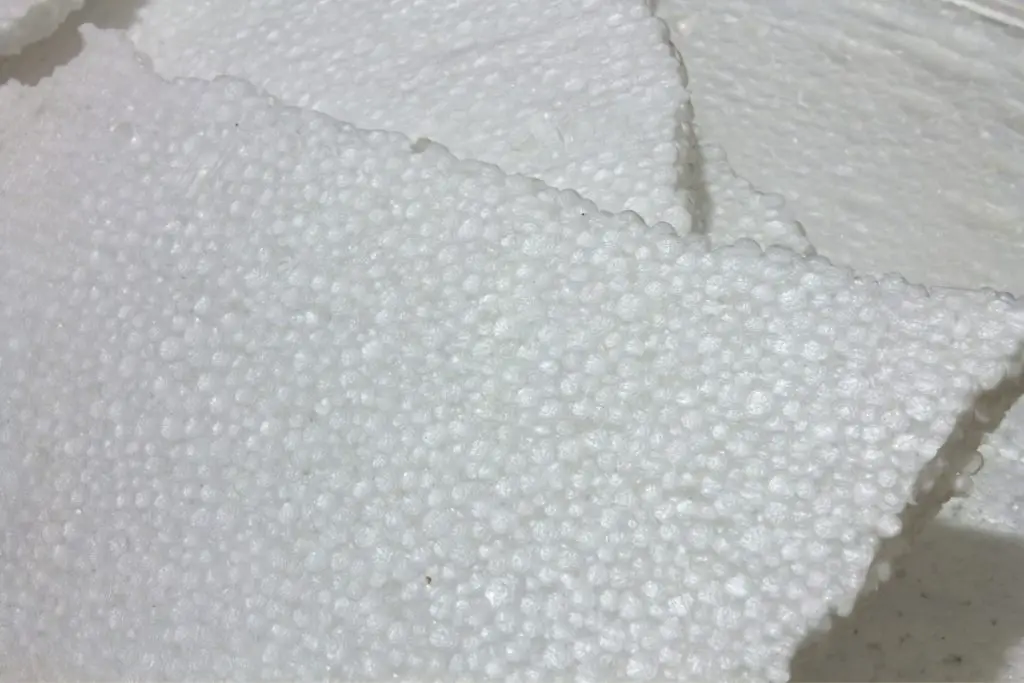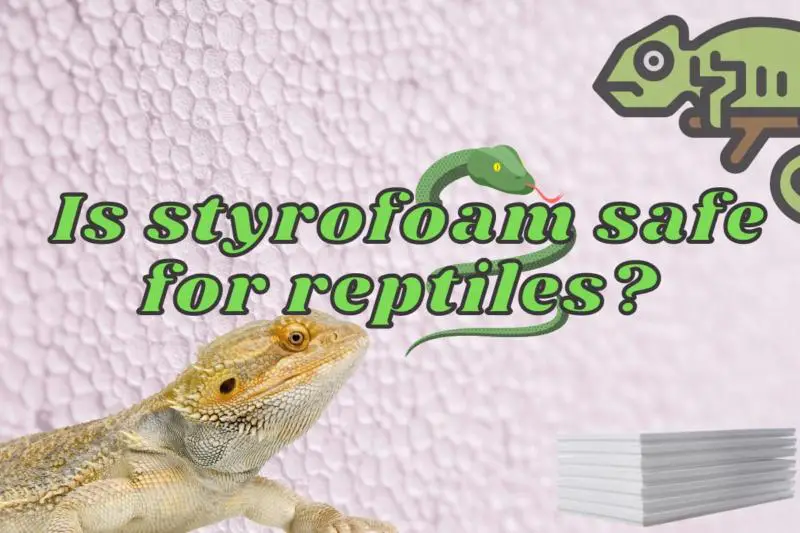You would never want to decorate your home with any explosive or hazardous material? And you should exercise an equal amount of caution when adorning your pets’ homes.
Both expanding foam and Styrofoam are safe options for your reptiles and create a stable and consistent temperature all through the year. The real hazard of Styrofoam is in the rare cases where smaller animals may ingest and choke on the material or swallow it and suffer from constipation.
However, all of these hazards can be prevented by implementing the foam material in the right way to be inaccessible to your pet in its enclosure.
Styrofoam can be used for insulation, making faux yet realistic-looking wall backdrops or other interior designs for your snakes, lizards, or amphibians. I process that can be a lot of fun. Plus, it provides a lot of enrichment for your pet’s enclosure.
And the best news is that you can fix it easily, especially when you have chosen Styrofoam for your reptile’s home as it is cheap and disposable.
What is Styrofoam?

We are well aware of how Styrofoam looks – it’s the bright and squeaky material used for making toys and insulated stuff and also for packing.
But what is it made of, and how?
Styrofoam is made from styrene and it is a by-product of petroleum. The process involves a polymerization reaction in which styrene is linked together into polystyrene – the product we know as Styrofoam.
When the small polystyrene pellets are extruded by exposure to hot steam during rapid mixing, it expands up to 40 times their original size. Afterwards, they are collectively molten into whatever shape is needed.
Styrofoam is a trademarked brand for closed-cell extruded polystyrene foam which is generally referred to as Blue Board. Styrofoam is used all across the globe and is often colloquially used for referring to another white material which is not extruded.
The usage of Styrofoam sheets is not limited to cushioning materials only and is now used in animal homes and other craft purposes.
Is Styrofoam safe for bearded dragons?
When it comes to making a warm and cozy home for bearded dragons, geckos, turtles or other reptiles, Styrofoam is one of the most coveted choices.
The structural requirements of building a rock wall or proper insulation are not much and it is entirely dependent on the species of reptile it is going to accommodate.
Overall, Styrofoam is a good choice when you deploy it in the right way. You need to seal the edges in such a way so that those tiny balls of Styrofoam do not come out.

Polystyrene is made from a polymer that contains various toxic subunits of which Benzene is the most important. Benzene is a suspected carcinogen as well as a neurotoxin that are hazardous for human beings and other animals in large amounts.
But, because Styrofoam is at a very stable chemical form, it does not easily break down to release these toxic subunits.
This is good news for your pet (but bad for the environment…).
Because your inquisitive bearded dragons may lick the Styrofoam and this may contain traces of the chemicals used in the processing, I would never advice anyone to leave too much exposed and untreated polystyrene surface in their enclosure.
The real danger, however, comes when the reptile gets access to corners or edges of the Styrofoam from which it can scratch or bite of chunks that it accidently might swallow.
Due to the squeezable nature of Styrofoam, your reptile pets may think it can easily fit in its mouth, but it may later on expand and block its airways or digestive tract. As it will not be digested by the enzymes in animals, it can also wreck havoc later on by blocking the gastro intestinal track and lead to constipation.
Is expanding foam safe for reptiles?
Expanding foam, or spray foam, is particularly designed for sealing cracks in home and other usages in construction.
But reptile keepers have found that it’s an effective material for sealing vivarium spaces. You can also use it for creating a floating garden look for your chameleon, snakes, and turtles.
Expanding foam, like Styrofoam, is not toxic in its stable form as it is very chemically inert (it does not break down into its toxic components), but its subcomponents in isolation are.

However, as you mix the foam components yourself in the application process (this is what happens just before it enters the nozzle of your spray gun), there is a danger that the subcomponents have not fully reacted before you expose it too your pet.
Therefore, you have to make sure that all expanding foam has hardened properly before letting your reptile back into its enclosure.
The time before the spray foam is fully hardened may depend on the manufacturer, but will take between 1-24 hours, so leave it for at least 24 hours to be safe!
Expanding foam is not a good option if your pets have a tendency to chew stuff.
While the foam expands, it can sometimes squeeze through the panels and form small mounds outside the cage or structure.
After the installation process is complete, the exposed part can become hazardous for reptiles. The best safety measure in this regard is to vacate their home during the installation process and also for another day till you introduce them to the new home.
This is harmless for your pet as well as your family members and you can leave it in that way only. But it may encourage the animal to bite it more so you may cut the extra portion off with a knife.
What foam board is safe for reptiles?

Compared to lose Styrofoam balls or extruding bits of spray foam, all foam boards are less accessible to your reptile, less likely to be ingested, and are therefore safer.
After the application is set minimally exposed, foam board is completely safe for reptiles as well as humans. The material is non-toxic and your pets will have the benefit of a warmer home.
Since reptiles are incredibly sensitive to fluctuations in temperatures, both spray foam and foam boards are effective in insulation and keeping the temperature consistent even during transit.
The greatest advantage of foam boards includes keeping your reptiles safe and protected without causing any health hazards.
They also provide an insulating barrier between your pets and the elements. And the best part is that you can also use them in enclosures other pets than reptiles and amphibians.
Conclusion
For your exotic pets, ensuring an optimum temperature should be your utmost priority. And this is where the role of expanding foam and Styrofoam comes in.
While you should not worry about toxicity aspects of styrofoam and spray foam if used correctly, they may be hazardous when ingested by the pets.
However, these aspects can be fully avoided if you are cautious of this aspect while designing your pet reptile’s enclosure.
It is also worth noting that sometimes reptiles can be susceptible to more heat than what they can endure, so be careful not to over insulate the enclosure or adjust your heat lamp accordingly.
Finally, you may also be interested in how to add other objects such as soil and rocks safely to your reptile or amphibian tank.




